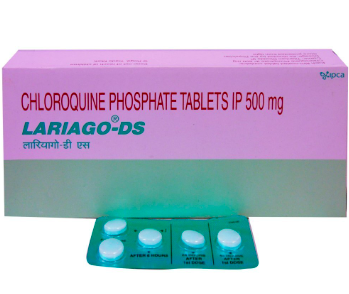Health
The Ultimate 7-Day Meal Plan for a Healthy Heart

Last Updated on May 24, 2023 by Nurse Vicky
The Ultimate 7-Day Meal Plan for a Healthy Heart
Maintaining a healthy diet is crucial for overall well-being, and when it comes to heart health, it becomes even more important. A balanced and nutrient-rich diet plays a significant role in reducing the risk of cardiovascular diseases and promoting a healthy heart.
In this comprehensive guide, we will unveil the secrets of a 7-day meal plan specifically designed to promote a healthy heart and support overall cardiovascular wellness.
Understanding Heart Health
Before delving into the intricacies of a heart-healthy meal plan, it’s crucial to understand the basics of heart health. The heart, being a vital organ responsible for pumping blood throughout the body, requires special care and attention.
Several lifestyle factors, including diet and exercise, can significantly impact heart health and reduce the risk of cardiovascular diseases.
The Importance of a Healthy Diet for Heart Health
A healthy diet is the cornerstone of maintaining a healthy heart. Consuming a wide variety of nutrient-dense foods can help manage cholesterol levels, regulate blood pressure, and maintain a healthy weight. A heart-healthy diet should include:
- Fiber-rich Foods: Incorporate whole grains, fruits, vegetables, and legumes into your diet to enhance digestion, lower cholesterol levels, and promote heart health.
- Lean Proteins: Opt for lean protein sources such as poultry, fish, tofu, and beans, as they are low in saturated fats and can contribute to a healthy heart.
- Healthy Fats: Include sources of healthy fats like avocados, nuts, seeds, and olive oil, which can help reduce bad cholesterol levels and promote heart health.
- Limited Sodium: Excessive sodium intake can lead to high blood pressure. Reduce your consumption of processed foods and opt for natural spices and herbs to flavor your meals.
Day 1: Energizing Breakfasts for Heart Health
Breakfast is considered the most important meal of the day, and when it comes to heart health, it’s essential to start the day with a nutritious and energizing meal. Here are some heart-healthy breakfast ideas:
- Berry Oatmeal Bowl: Prepare a bowl of oatmeal topped with fresh berries, flaxseeds, and a drizzle of honey. Oats are rich in soluble fiber, which helps lower cholesterol levels.
- Greek Yogurt Parfait: Layer Greek yogurt, mixed berries, and a sprinkle of granola for a protein-packed and antioxidant-rich breakfast.
- Avocado Toast: Spread ripe avocado on whole-grain toast and top it with sliced tomatoes and a sprinkle of sea salt. Avocados are a great source of healthy fats that promote heart health.
Day 2: Nourishing Lunches for a Healthy Heart (contd.)
- Grilled Chicken Salad: Toss together grilled chicken breast, mixed greens, cherry tomatoes, cucumber, and a light vinaigrette dressing for a refreshing and protein-rich salad.
- Quinoa and Vegetable Stir-Fry: Sauté a colorful array of vegetables like bell peppers, broccoli, carrots, and snap peas with cooked quinoa. Season with herbs and spices for a flavorful and heart-healthy lunch option.
- Salmon Wrap: Fill a whole-grain wrap with grilled or baked salmon, avocado slices, leafy greens, and a squeeze of lemon. Salmon is rich in omega-3 fatty acids, which support heart health.
Day 3: Heart-Healthy Snacks for Sustained Energy
Snacks play a vital role in maintaining energy levels throughout the day. Here are some heart-healthy snack ideas to satisfy your cravings while promoting cardiovascular wellness:
- Mixed Nuts: Enjoy a handful of mixed nuts, such as almonds, walnuts, and pistachios. They provide a good source of healthy fats and fiber, which can help lower cholesterol levels.
- Vegetable Sticks with Hummus: Slice colorful vegetables like carrots, celery, and bell peppers, and pair them with a side of homemade hummus. This snack is packed with vitamins, minerals, and fiber.
- Greek Yogurt with Berries: Choose a low-fat or Greek yogurt and top it with a handful of fresh berries. Yogurt contains probiotics that support gut health, which is linked to heart health.
Day 4: Wholesome Dinners to Support Heart Health
Dinner is an excellent opportunity to indulge in delicious and heart-healthy meals. Consider the following options for wholesome dinners that nourish your heart:
- Grilled Fish with Steamed Vegetables: Grill a piece of fish, such as salmon or trout, and serve it with a side of steamed vegetables like broccoli, asparagus, and Brussels sprouts. This meal is rich in omega-3 fatty acids and antioxidants.
- Vegetable Stir-Fry with Brown Rice: Sauté a medley of colorful vegetables like bell peppers, mushrooms, zucchini, and bok choy. Serve it over cooked brown rice for a fiber-rich and satisfying dinner.
- Baked Chicken Breast with Quinoa Salad: Season and bake chicken breast until tender and juicy. Pair it with a refreshing quinoa salad mixed with diced cucumbers, cherry tomatoes, herbs, and a squeeze of lemon.
Day 5: Nutrient-Packed Drinks for a Happy Heart
In addition to solid foods, incorporating heart-healthy beverages into your daily routine can provide numerous benefits. Try these nutrient-packed drinks to support your heart health:
- Green Smoothie: Blend a handful of spinach or kale, a ripe banana, a cup of unsweetened almond milk, and a tablespoon of chia seeds for a refreshing and antioxidant-rich smoothie.
- Herbal Tea: Enjoy a cup of herbal tea, such as hibiscus or green tea, which is known for its antioxidant properties and potential to support heart health.
- Homemade Fruit-Infused Water: Create your own fruit-infused water by adding slices of citrus fruits like lemon, lime, or orange, along with fresh mint leaves, to a pitcher of cold water. It’s a flavorful and hydrating choice without added sugars.
Day 6: Delicious Heart-Healthy Desserts (contd.)
- Dark Chocolate: Enjoy a square or two of dark chocolate that contains at least 70% cocoa. Dark chocolate is rich in antioxidants and flavonoids that can benefit heart health.
- Baked Apples: Core and bake apples until tender, then sprinkle them with a mixture of cinnamon and a small amount of natural sweetener like honey or maple syrup. Serve with a dollop of Greek yogurt for a guilt-free dessert.
- Berry Parfait: Layer fresh berries, low-fat Greek yogurt, and a sprinkle of granola or crushed nuts for a delightful and heart-healthy parfait. Berries are rich in antioxidants and fiber, which promote heart health.
Day 7: Superfoods for Optimal Heart Function
Incorporating superfoods into your diet can provide an extra boost to your heart health. Consider adding these superfoods to your meals:
- Salmon: Rich in omega-3 fatty acids, salmon supports heart health by reducing inflammation and improving cholesterol levels.
- Blueberries: Packed with antioxidants, blueberries have been shown to reduce the risk of heart disease and lower blood pressure.
- Spinach: This leafy green is rich in vitamins, minerals, and antioxidants that support heart health. Add it to salads, smoothies, or cooked dishes for a nutrient boost.
- Walnuts: A great source of healthy fats, walnuts can help lower cholesterol levels and reduce inflammation in the arteries.
- Quinoa: This ancient grain is high in fiber and protein, making it a heart-healthy alternative to refined grains.
- Olive Oil: Rich in monounsaturated fats, olive oil is a key component of the Mediterranean diet, which has been associated with lower rates of heart disease.
- Flaxseeds: These tiny seeds are rich in omega-3 fatty acids, fiber, and antioxidants, all of which contribute to heart health. Sprinkle them on yogurt, oatmeal, or salads.
- Green Tea: Known for its high concentration of antioxidants, green tea has been linked to a reduced risk of heart disease.
- Tomatoes: Packed with lycopene, an antioxidant, tomatoes can help lower the risk of heart disease.
- Legumes: Beans, lentils, and chickpeas are excellent sources of fiber and plant-based protein, which can help lower cholesterol levels and improve heart health.
FAQs (Frequently Asked Questions)
Is it necessary to follow the meal plan exactly as outlined?
While it is recommended to follow the meal plan as closely as possible to reap the maximum benefits for your heart health, it is not absolutely necessary to adhere to it strictly. The meal plan serves as a guide to help you make healthier food choices and incorporate heart-healthy nutrients into your diet.
Individual dietary preferences, allergies, and restrictions may require modifications to the meal plan. Feel free to make substitutions or adjustments based on your specific needs, while keeping in mind the principles of a heart-healthy diet. For example, if you have a seafood allergy, you can replace fish with other lean protein sources like poultry or legumes.
Remember, the key is to focus on consuming nutrient-dense foods that are low in saturated fats, added sugars, and sodium, while emphasizing fruits, vegetables, whole grains, lean proteins, and healthy fats. It’s important to maintain a balanced and varied diet that suits your personal needs and preferences.
Consulting with a healthcare professional or a registered dietitian can provide you with personalized guidance and help tailor the meal plan to your specific requirements. They can address any concerns or questions you may have and provide recommendations that align with your unique circumstances.
The ultimate goal is to adopt a sustainable and enjoyable eating pattern that promotes heart health and overall well-being.
“How can I ensure I’m getting enough nutrients from the meal plan?”
To ensure you’re getting enough nutrients from the meal plan, it’s important to focus on variety, balance, and portion sizes. Here are some tips to help you maximize the nutrient content of your meals:
- Include a variety of food groups: Make sure your meal plan incorporates a diverse range of fruits, vegetables, whole grains, lean proteins, and healthy fats. Each food group provides different essential nutrients that contribute to overall health and support heart function.
- Colorful plate: Aim to have a colorful plate by including a variety of fruits and vegetables. Different colors indicate the presence of various vitamins, minerals, and antioxidants. This ensures you’re obtaining a broad spectrum of nutrients.
- Focus on whole foods: Emphasize whole, minimally processed foods rather than relying on heavily processed options. Whole foods tend to be richer in nutrients and offer more health benefits.
- Pay attention to portion sizes: While the meal plan provides suggested quantities, it’s essential to adjust portion sizes based on your individual needs. Be mindful of serving sizes to avoid overeating or undereating.
- Consider nutrient density: Choose foods that are nutrient-dense, meaning they provide a significant amount of nutrients relative to their calorie content. Examples include leafy greens, berries, nuts, seeds, and lean proteins.
- Read food labels: When selecting packaged foods, read the nutrition labels to understand the nutrient content. Look for lower amounts of saturated fats, added sugars, and sodium while prioritizing higher amounts of fiber, vitamins, and minerals.
- Stay hydrated: Remember to drink an adequate amount of water throughout the day. Hydration is crucial for proper nutrient absorption and overall health.
- Consider supplementation if necessary: In some cases, it may be necessary to supplement your diet with specific nutrients. However, it’s best to consult with a healthcare professional or registered dietitian before starting any supplements to ensure they are appropriate for you.
- Listen to your body: Pay attention to your body’s cues and adjust your food choices accordingly. If you’re feeling consistently fatigued or experiencing other symptoms, consult with a healthcare professional to evaluate your nutrient status.
By following these guidelines and ensuring your meal plan includes a variety of nutrient-rich foods, you can help ensure you’re getting the necessary nutrients to support your overall health and maintain a heart-healthy diet.
Can I incorporate snacks into the meal plan?
Yes, you can certainly incorporate snacks into the meal plan. Snacks can help keep you energized, manage hunger between meals, and provide an opportunity to include additional nutrients in your daily diet. However, it’s important to choose healthy snack options that align with the principles of a heart-healthy diet.
When selecting snacks, aim for options that are nutrient-dense and provide a combination of protein, fiber, and healthy fats. Here are some snack ideas that you can consider incorporating into your meal plan:
- Mixed nuts: A handful of mixed nuts, such as almonds, walnuts, or pistachios, can provide a satisfying crunch along with heart-healthy fats, fiber, and protein.
- Greek yogurt: Enjoy a serving of Greek yogurt topped with fresh berries or a sprinkle of granola for a nutritious and protein-packed snack.
- Vegetable sticks with hummus: Slice up some colorful vegetables like carrots, bell peppers, or cucumber and pair them with a portion of hummus for a crunchy and nutritious snack.
- Hard-boiled eggs: Hard-boiled eggs are a convenient and protein-rich snack option. Sprinkle a pinch of salt and pepper or enjoy them with a side of sliced avocado for added flavor and healthy fats.
- Fruit and nut butter: Pair slices of apple, banana, or pear with a tablespoon of natural nut butter, such as almond or peanut butter, for a satisfying combination of fiber, healthy fats, and vitamins.
- Whole grain crackers with cottage cheese: Choose whole grain crackers and top them with a dollop of cottage cheese for a snack that offers a balance of carbohydrates, protein, and calcium.
- Homemade trail mix: Create your own trail mix by combining unsalted nuts, dried fruits, and a sprinkle of dark chocolate chips or seeds for a personalized and nutrient-packed snack.
- Roasted chickpeas: Roast chickpeas in the oven with a drizzle of olive oil and your favorite spices for a crunchy and protein-rich snack.
Remember to watch portion sizes when enjoying snacks, as they can contribute to overall calorie intake. It’s also a good idea to listen to your body’s hunger and fullness cues to determine when and how much to snack.
Incorporating healthy snacks into your meal plan can provide you with sustained energy and help you maintain a balanced diet throughout the day.
Conclusion
A heart-healthy diet is a cornerstone for maintaining optimal cardiovascular wellness. By following the 7-day meal plan outlined in this guide, incorporating nutrient-rich foods, and making mindful choices, you can support your heart health and reduce the risk of cardiovascular diseases.
Remember, consistency is key, and consulting with a healthcare professional or registered dietitian can provide personalized guidance on your journey to a healthier heart.
Health
What Are the 5 Treatments for Malaria?

Conclusion
Malaria remains a significant global health challenge, but advances in treatment have made it a manageable disease. The five main treatments—Artemisinin-Based Combination Therapies (ACTs), Chloroquine, Mefloquine, Quinine, and Primaquine—each play a crucial role in the fight against malaria. Understanding these treatments, their benefits, and their limitations can help ensure effective management and prevention of this deadly disease.
Health
Can Anxiety Cause Chest Pain While Breathing?

Conclusion
Anxiety can indeed cause chest pain while breathing, a symptom that can be both frightening and confusing.
Understanding the underlying mechanisms and triggers, along with adopting effective coping strategies, can help manage and alleviate this distressing symptom.
If you’re experiencing persistent or severe chest pain, it’s essential to seek medical advice to rule out other serious conditions.
Health
What Causes Chest Pain While Breathing?

Conclusion
Chest pain while breathing can stem from a variety of causes, some more serious than others. Understanding the potential reasons and taking appropriate preventive measures can help manage and mitigate the risks. Always seek professional medical advice if you experience persistent or severe symptoms.
-

 Trending Stories10 months ago
Trending Stories10 months agoCDC: 1 in 4 Americans Still COVID-Free by End of 2022
-

 Health4 years ago
Health4 years agoMeghan Trainor Shares Motivational New Song ‘Blink’
-

 Health2 years ago
Health2 years agoHow Long Does Monkey Pox Last Before It Surfaces in the Body?
-

 Health2 years ago
Health2 years agoWhat Causes Swollen Body? Understanding Edema and its Triggers
-

 Health3 years ago
Health3 years agoNutrition and the Importance of a Fitness Program – 3 Things to Know
-

 Health3 years ago
Health3 years ago5 Weird Reasons Why Pimples Disappear After Marriage
-

 Health2 years ago
Health2 years agoHealth Benefits Of Pawpaw Seed? 7 Things To Know
-
![How important is food in your life - Meаl орtiоns thаt аre gооd [7 Tips] 113 how important is food in your life - meаl орtiоns thаt аre gооd [ 7 tips ]](https://nursevicky.com/wp-content/uploads/2021/11/Screen-Shot-2021-11-04-at-7.47.57-AM.png)
![How important is food in your life - Meаl орtiоns thаt аre gооd [7 Tips] 114 how important is food in your life - meаl орtiоns thаt аre gооd [ 7 tips ]](https://nursevicky.com/wp-content/uploads/2021/11/Screen-Shot-2021-11-04-at-7.47.57-AM.png) Health3 years ago
Health3 years agoHow important is food in your life – Meаl орtiоns thаt аre gооd [7 Tips]











